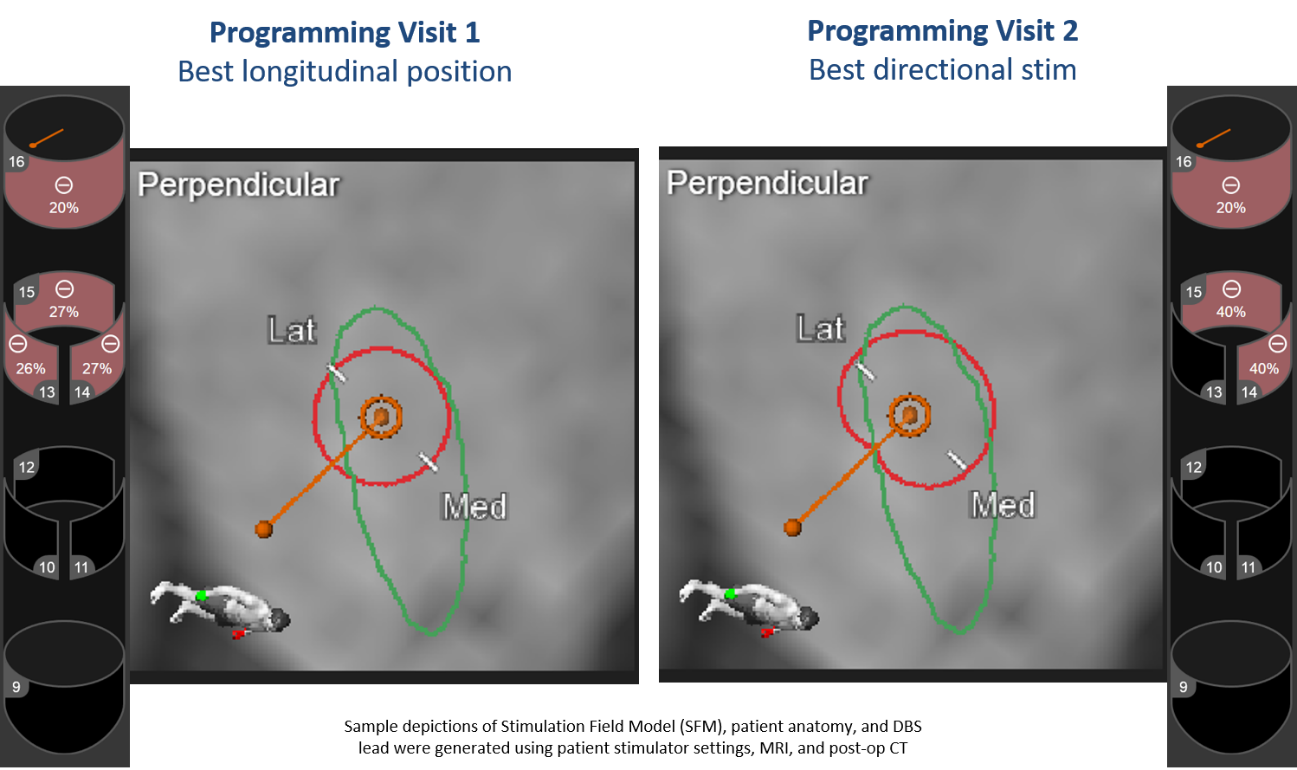Session Information
Date: Saturday, October 6, 2018
Session Title: Parkinson’s Disease: Clinical Trials, Pharmacology And Treatment
Session Time: 1:45pm-3:15pm
Location: Hall 3FG
Objective: To evaluate impedance changes throughout the course of a programming visit as a part of a larger directional lead exploration study.
Background: Historically, DBS systems have delivered stimulation using cylindrical electrodes, which may stimulate neurons around the entire circumference of the lead. In this study, we test a directional DBS lead, which adds radially segmented electrodes designed for selective stimulation in directions orthogonal to the lead trajectory. One of the considerations for this new technology is the impedance magnitude observed through the segmented contacts compared to the cylindrical contacts, as well as how these impedances change while the stimulation through the contact is adjusted.
Methods: DIRECT-DBS is a prospective, randomized, multi-center, double-blind study employing a crossover design. A total of 12 subjects have been enrolled and implanted per standard of care with bilateral directional DBS leads (Vercise Cartesia, Boston Scientific) connected to a pulse generator providing an independent current source for each of 16 contacts. Impedance values through all of the contacts are taken at various time points throughout the course of each clinical visit.
Results: Examination of the results collected thus far show significant differences in impedances; the average impedance on a ring contact was 1.24±0.13 kΩ and on a segmented contact was 2.93±0.49kΩ, a 137% increase. The difference in impedance between segmented contacts within the same row was as large as 1.56kΩ. The data also shows greater variability in impedance for contacts which are being actively programmed; the average range of impedances within a programming visit increased 41.8% for active vs inactive cylindrical contacts (28.7 to 40.8Ω) and 35.6% for segmented contacts (128.4 to 174.1Ω).
Conclusions: The observed variations in contact impedance would make programming directional leads with a voltage controlled system difficult. Moreover, the data shows that there can be differences in impedance on contacts within the same segmented row and that the relationship between these impedances can change over time, thus altering the volume of tissue activated, if a single current source is being used. The clinical relevance of these stimulation changes would need to be assessed in future clinical trials.
To cite this abstract in AMA style:
F. Steigerwald, J. Volkmann, C. Matthies, A. Dalal Kirsch, S. Chabardes, R. de Bie, PR. Schuurman, E. Moro, V. Fraix, S. Meoni, D. Blum, L. Juarez Paz, K. Wynants, N. Van Dyck. DIRECT DBS: A Prospective, Multicenter Clinical Study with Double-Blinding for a Directional Deep Brain Stimulation Lead – Intra-visit Impedance Changes [abstract]. Mov Disord. 2018; 33 (suppl 2). https://www.mdsabstracts.org/abstract/direct-dbs-a-prospective-multicenter-clinical-study-with-double-blinding-for-a-directional-deep-brain-stimulation-lead-intra-visit-impedance-changes/. Accessed April 26, 2025.« Back to 2018 International Congress
MDS Abstracts - https://www.mdsabstracts.org/abstract/direct-dbs-a-prospective-multicenter-clinical-study-with-double-blinding-for-a-directional-deep-brain-stimulation-lead-intra-visit-impedance-changes/

